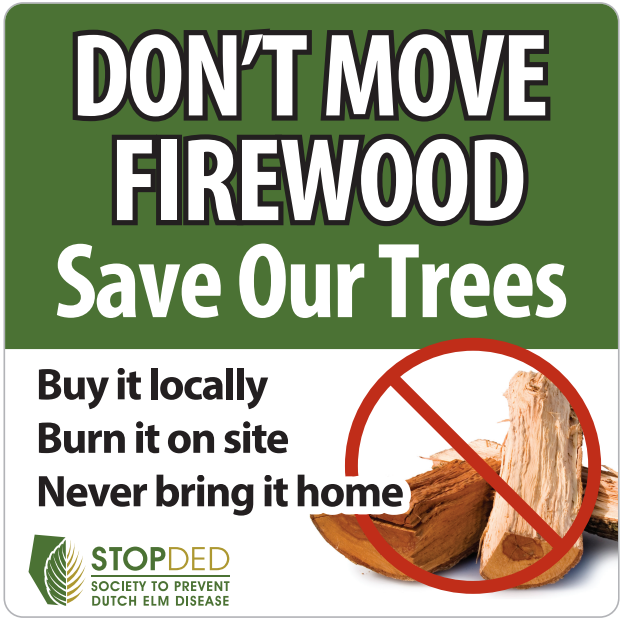
Dutch Elm Disease
Dutch elm disease (DED) is a disease of all elm, Ulmus genus trees and specific cultivars including American, Siberian and Japanese elm.
DED is caused by a fungus, carried as spores on the body of three species of bark beetles. These spores then spread into and infect the walls of the water-transport system (xylem) triggering the trees’ defense mechanism.
Specialized lab tests confirm its’ presence from branch samples of suspected trees.
The beetles measure 2-3 mm in size and are generally dark brown with stiff yellow hairs on their body.
They are drawn to recently pruned, stressed or dying elm trees, where they feed and lay their eggs in the inner bark. After the young beetles mature into adults, they fly off in search of healthy elms to feed on—carrying the fungus with them, spreading the infection to other trees.
The fungus remains in the tree and can also be spread to nearby elms through touching roots (root grafts) below the soil surface.
Native elm bark beetle European elm bark beetle Banded elm bark beetle
The City of Edmonton has confirmed presence of Dutch Elm Disease (DED). Read the news release HERE.
Look for and report the following signs and symptoms to 1-877-837-ELMS:
Sudden wilting, drooping, and curling of tree leaves on one or more major branches in the crown of the tree. Be on the look out for this to begin in early to mid-June.
Flagging: Leaves will turn yellow, dryout and become brown but remain on the tree. This usually begins by late June or July and stay attached into the winter.
Staining: Brown or reddish streaks in the inner tree tissues (sapwood) when bark is peeled away; healthy elm wood is typically cream coloured.
Round exit holes roughly 1/16” diameter or size of pencil lead with sawdust accumulating on bark.
Safeguard our Elms!
Monitor and Report suspected Elm trees to 1-877-837-ELMS or report to local municipal 311 dispatch.
There are approximately 600,000 elm trees growing across Alberta. They are valued at over $2 billion dollars. With these confirmations in the City of Edmonton, community monitoring remains an integral part of municipal containment efforts.
Effective management of DED includes:
restricted pruning periods from October 1 through to March 31.
reporting suspected trees with symptoms of DED to 1-877-837-ELMS or report to local municipal 311 dispatch.
burning firewood where you buy it; do not transport firewood.
care of elm trees includes watering from April to mid-August.



